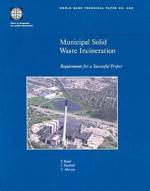|
This section contains 726 words (approx. 3 pages at 300 words per page) |

|
Stack emissions are those gases and solids that come out of the smoke stack after the incineration process. Incinerators can be designed to accept wastes of any physical form, including gases, liquids, solids, sludges, and slurries. Incineration is primarily for the treatment of wastes that contain organic compounds. Wastes with a wide range of chemical and physical characteristics are considered suitable for burning. Most of these wastes are by-products of industrial manufacturing and chemical production processes, or result from the clean-up of contaminated sites.
There is a great deal of controversy about the content of incinerator stack emissions. The Environmental Protection Agency (EPA) supports incineration as a waste management tool and claims that these emissions are not dangerous. In an official publication, the EPA has stated: "Incinerator emission gases are composed primarily of two harmless inorganic compounds, carbon dioxide and water. The type and quantity of...
|
This section contains 726 words (approx. 3 pages at 300 words per page) |

|


